 The Southwest Louisiana Express
The Southwest Louisiana Express 
Are More Bars
Needed in Downtown Lafayette?
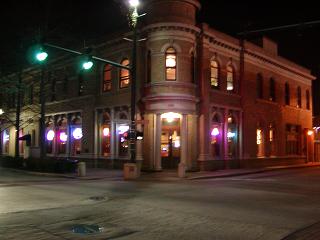 Are more bars needed in downtown
Lafayette? Today, many people enjoy their night life at bars in
downtown Lafayette regardless of age or sex. Some nighthawks
overflowed bars into Jefferson Street after midnight of Friday and
Saturday. Of course, it is no match for Bourbon Street in New
Orleans, but downtown Lafayette seems to be pretty vibrant. Thus,
bars can raise the spirit of the downtown, which in turn helps the
economic development. However, since proper land use is
significant for the redevelopment of downtown Lafayette, too many bars
obstruct the redevelopment. Now increasing the number of bars
causes some problems, so residential or other commercial land uses
should precede the use of land for bars. The number of bars in
downtown Lafayette should not grow any more until effective land use
measures have been taken so that downtown Lafayette will be redeveloped
wholesomely.
Are more bars needed in downtown
Lafayette? Today, many people enjoy their night life at bars in
downtown Lafayette regardless of age or sex. Some nighthawks
overflowed bars into Jefferson Street after midnight of Friday and
Saturday. Of course, it is no match for Bourbon Street in New
Orleans, but downtown Lafayette seems to be pretty vibrant. Thus,
bars can raise the spirit of the downtown, which in turn helps the
economic development. However, since proper land use is
significant for the redevelopment of downtown Lafayette, too many bars
obstruct the redevelopment. Now increasing the number of bars
causes some problems, so residential or other commercial land uses
should precede the use of land for bars. The number of bars in
downtown Lafayette should not grow any more until effective land use
measures have been taken so that downtown Lafayette will be redeveloped
wholesomely.Downtown Lafayette went downhill after the oil boom in the 1950's and 1960's, but it is getting vibrant again through the recent prosperity of many bars. Although it may be true that bars contribute to the redevelopment of downtown Lafayette, the haphazard growth, such as a disorderly increase in bars, will cause the same failure of the downtown's growth as after the oil boom. Therefore, in June 2003, Lafayette City-Parish Council, in a 5-3 vote, decided to prohibit any more bars from opening in downtown (Rom, 2003).
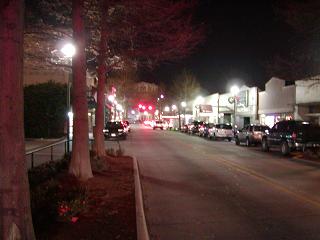 One reason why the number of bars
in downtown Lafayette should not grow any more is that a reasonable
land use plan is necessary for its redevelopment. Alexander et
al. (1987) considers a reasonable balance of the land use as the first
of seven rules of growth, but the ideal balance would vary from
community and community depending on what the community wishes.
Downtown Lafayette aims for the mixed use development but a copy of
Bourbon Street. According to Dempsey (2003), Anton Nelessen, a
nationally recognized urban planner, indicates that the ratio of
alcohol-only establishments should make up only 10 percent of a
downtown area's available square footage. This is the case of
Lafayette. So Nelessen judges that Lafayette City-Parish was
right to stop opening bars, otherwise the city would made the same
mistake as Buckhead in Atlanta (Dempsey). The inhabitants of
Buckhead are worried about "Too many bars and lots of traffic" now
(Cabell, 2000). Furthermore, Nelessen suggests that restaurants and
cafés including alcohol-only establishments should make up 30
percent, and this means that the other 70 percent should be shared with
residential or commercial uses (Dempsey). Therefore, because
specialists of urban planning indicate the importance of a reasonable
land use plan and suggest a specific plan for downtown Lafayette, it is
obvious that the number of bars was grown too much and should not grow
any more.
One reason why the number of bars
in downtown Lafayette should not grow any more is that a reasonable
land use plan is necessary for its redevelopment. Alexander et
al. (1987) considers a reasonable balance of the land use as the first
of seven rules of growth, but the ideal balance would vary from
community and community depending on what the community wishes.
Downtown Lafayette aims for the mixed use development but a copy of
Bourbon Street. According to Dempsey (2003), Anton Nelessen, a
nationally recognized urban planner, indicates that the ratio of
alcohol-only establishments should make up only 10 percent of a
downtown area's available square footage. This is the case of
Lafayette. So Nelessen judges that Lafayette City-Parish was
right to stop opening bars, otherwise the city would made the same
mistake as Buckhead in Atlanta (Dempsey). The inhabitants of
Buckhead are worried about "Too many bars and lots of traffic" now
(Cabell, 2000). Furthermore, Nelessen suggests that restaurants and
cafés including alcohol-only establishments should make up 30
percent, and this means that the other 70 percent should be shared with
residential or commercial uses (Dempsey). Therefore, because
specialists of urban planning indicate the importance of a reasonable
land use plan and suggest a specific plan for downtown Lafayette, it is
obvious that the number of bars was grown too much and should not grow
any more.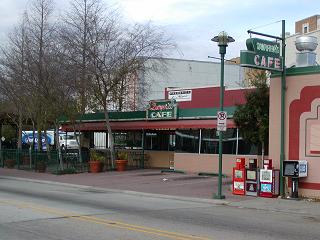 The second reason why the number
of bars in downtown Lafayette should not grow any more is that
residential land use should precede the use of land for bars.
Downtown Lafayette is a good place to live because of its favorable
location. There is a bus terminal, a train station and a post
office, and there are many cultural facilities such as the museum and
gallery, some stores such as the bakery and pharmacy, good restaurants
and clean parks. However, downtown Lafayette is faced with its
lack of the residential land use. Bringing residents to downtown
is necessary for the redevelopment because it brings not only the
proper rate of the land use but new businesses. Invitations of
new businesses such as grocery, hardware, clothing, book, video,
jewelry stores and repair services are expected through the increase of
residents (Dempsey, 2003). The increase of residents has such a
merit from an economical view point, while too many bars keeps
residents away from living downtown now. Some bars produce
excessive merrymakers and invite noisy vehicles and motorcycles; to cap
it all, downtown becomes dirty and noisy every weekend. Such
environmental deteriorations which are produced by bars obviously make
it hard to live in downtown.
The second reason why the number
of bars in downtown Lafayette should not grow any more is that
residential land use should precede the use of land for bars.
Downtown Lafayette is a good place to live because of its favorable
location. There is a bus terminal, a train station and a post
office, and there are many cultural facilities such as the museum and
gallery, some stores such as the bakery and pharmacy, good restaurants
and clean parks. However, downtown Lafayette is faced with its
lack of the residential land use. Bringing residents to downtown
is necessary for the redevelopment because it brings not only the
proper rate of the land use but new businesses. Invitations of
new businesses such as grocery, hardware, clothing, book, video,
jewelry stores and repair services are expected through the increase of
residents (Dempsey, 2003). The increase of residents has such a
merit from an economical view point, while too many bars keeps
residents away from living downtown now. Some bars produce
excessive merrymakers and invite noisy vehicles and motorcycles; to cap
it all, downtown becomes dirty and noisy every weekend. Such
environmental deteriorations which are produced by bars obviously make
it hard to live in downtown.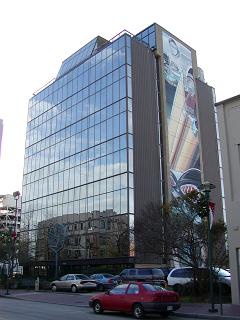 The third reason why the number
of bars in downtown Lafayette should not grow any more is that
commercial land use also should precede the use of land for bars.
Because downtown Lafayette is the Central Business District of
Lafayette, it seems to be a good place for business. However,
downtown Lafayette is actually monotonous and tasteless for business
now. Eddie P. Mouton who owns a retail business in downtown
Lafayette said "The only things left in Downtown Lafayette were the
banks and government offices," and "It had a core, but it wasn't a
retail core. It was a business core, a banking core. That
kept it from getting really bad" (Dempsey, 2003, p. 17). Some
galleries and the office of The Independent magazine were newly opened,
and the office of Louisiana Folk Roots moved to downtown Lafayette from
Breaux Bridge recently, but downtown Lafayette still has a lack of
commercial land use. Expectative commercial land uses of downtown
Lafayette are listed as follows; retail night and day, restaurants that
stay open on weekends and nights, nighttime entertainment beyond bars,
more service industry, grocery stores, housing, niche shopping,
physical fitness, boutiques, hotels (Dempsey). Inviting such
businesses is very important for the redevelopment because these
businesses promise synergistic benefits. Paumier describes the
benefits in his text book of the designing downtown; "Offices need and
support restaurants, shops, personal and business services, hotel and
meeting spaces, and in-town housing. Retailing creates
street-level vitality and provides convenient goods and services for
office workers, residents, and visitors" (1988, p. 24). Since the
benefits of the increase of new businesses are great and solid,
inviting new businesses to downtown Lafayette should precede the
increase of bars. Furthermore, although business environment is
not so affected by increasing the number of bars as residential
environment, environmental deteriorations by bars will limit the type
of business and prevent new businesses. Therefore, the number of
bars in downtown Lafayette should not grow any more from the business
point of view.
The third reason why the number
of bars in downtown Lafayette should not grow any more is that
commercial land use also should precede the use of land for bars.
Because downtown Lafayette is the Central Business District of
Lafayette, it seems to be a good place for business. However,
downtown Lafayette is actually monotonous and tasteless for business
now. Eddie P. Mouton who owns a retail business in downtown
Lafayette said "The only things left in Downtown Lafayette were the
banks and government offices," and "It had a core, but it wasn't a
retail core. It was a business core, a banking core. That
kept it from getting really bad" (Dempsey, 2003, p. 17). Some
galleries and the office of The Independent magazine were newly opened,
and the office of Louisiana Folk Roots moved to downtown Lafayette from
Breaux Bridge recently, but downtown Lafayette still has a lack of
commercial land use. Expectative commercial land uses of downtown
Lafayette are listed as follows; retail night and day, restaurants that
stay open on weekends and nights, nighttime entertainment beyond bars,
more service industry, grocery stores, housing, niche shopping,
physical fitness, boutiques, hotels (Dempsey). Inviting such
businesses is very important for the redevelopment because these
businesses promise synergistic benefits. Paumier describes the
benefits in his text book of the designing downtown; "Offices need and
support restaurants, shops, personal and business services, hotel and
meeting spaces, and in-town housing. Retailing creates
street-level vitality and provides convenient goods and services for
office workers, residents, and visitors" (1988, p. 24). Since the
benefits of the increase of new businesses are great and solid,
inviting new businesses to downtown Lafayette should precede the
increase of bars. Furthermore, although business environment is
not so affected by increasing the number of bars as residential
environment, environmental deteriorations by bars will limit the type
of business and prevent new businesses. Therefore, the number of
bars in downtown Lafayette should not grow any more from the business
point of view.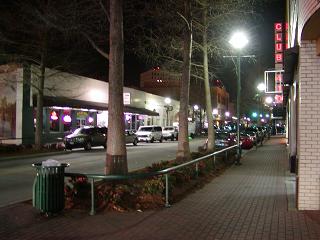 My opponents believe that bars
can rapidly enliven a downtown which was once deserted, and bars surely
have contributed to a business recovery of downtown Lafayette.
According to Dempsey (2003), there are 33 establishments which hold
alcohol permits in downtown Lafayette, and the bar owners were quicker
than most other businesses to react a hot new location. They
state that if more bars are opened, more people will come to enjoy, and
downtown Lafayette will be more flourishing. Furthermore, the
rise of night life in downtown can draw not only the locals but
tourists, and it may be welcome because tourism is one of the most
important industries in Lafayette. However, downtown Lafayette
went downhill once and failed to develop itself. The City of
Lafayette formed the revitalization plan as "Downtown Action Plan" in
1981. This means that the City of Lafayette already had
recognized the problem of the decline of the downtown then, and the
revitalization plan didn't work well because the downtown still has the
same problem. Now, downtown Lafayette has to put a well-organized
plan, which has great possibilities, into practice and avoid the
haphazard growth. Furthermore, downtown Lafayette should stop
depending on bars for its business recovery. There is nobody in
downtown Lafayette on Sunday, so it looks like a ghost town.
There is no place which produces recreation besides drinking on weekday
evenings, so people go to the outside of downtown Lafayette.
Besides bars, other recreational institutions, which are wholesome, not
casinos, need to be established so that downtown Lafayette will thrive
substantially. In addition, the fact is that increasing the
number of bars has a bad influence upon bringing new residents and
inviting new businesses to downtown Lafayette.
My opponents believe that bars
can rapidly enliven a downtown which was once deserted, and bars surely
have contributed to a business recovery of downtown Lafayette.
According to Dempsey (2003), there are 33 establishments which hold
alcohol permits in downtown Lafayette, and the bar owners were quicker
than most other businesses to react a hot new location. They
state that if more bars are opened, more people will come to enjoy, and
downtown Lafayette will be more flourishing. Furthermore, the
rise of night life in downtown can draw not only the locals but
tourists, and it may be welcome because tourism is one of the most
important industries in Lafayette. However, downtown Lafayette
went downhill once and failed to develop itself. The City of
Lafayette formed the revitalization plan as "Downtown Action Plan" in
1981. This means that the City of Lafayette already had
recognized the problem of the decline of the downtown then, and the
revitalization plan didn't work well because the downtown still has the
same problem. Now, downtown Lafayette has to put a well-organized
plan, which has great possibilities, into practice and avoid the
haphazard growth. Furthermore, downtown Lafayette should stop
depending on bars for its business recovery. There is nobody in
downtown Lafayette on Sunday, so it looks like a ghost town.
There is no place which produces recreation besides drinking on weekday
evenings, so people go to the outside of downtown Lafayette.
Besides bars, other recreational institutions, which are wholesome, not
casinos, need to be established so that downtown Lafayette will thrive
substantially. In addition, the fact is that increasing the
number of bars has a bad influence upon bringing new residents and
inviting new businesses to downtown Lafayette.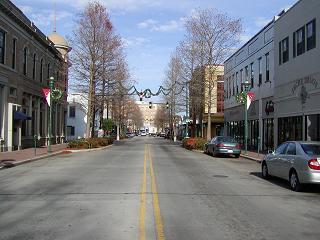 In conclusion, although the
prosperity of bars brings downtown Lafayette in quick-action benefits,
downtown Lafayette should not rely solely on bars now because downtown
Lafayette has to avoid failure caused by a haphazard growth in order to
make it in the redevelopment. As specialists of urban planning
notice, downtown Lafayette should be designed according to a reasonable
balance of the land use, and the number of bars obviously exceeds the
desirable number. The residential land use should precede the use
of bars because increasing the number of residents has advantages, and
too many bars makes downtown Lafayette hard to live. Moreover,
new businesses besides bars are so promising that the growth of new
businesses has priority over the prosperity of bars, and new businesses
should not be affected by bars. Thus, the number of bars in
downtown Lafayette should not grow any more in the long run. Are
more bars still needed in downtown Lafayette even now?
In conclusion, although the
prosperity of bars brings downtown Lafayette in quick-action benefits,
downtown Lafayette should not rely solely on bars now because downtown
Lafayette has to avoid failure caused by a haphazard growth in order to
make it in the redevelopment. As specialists of urban planning
notice, downtown Lafayette should be designed according to a reasonable
balance of the land use, and the number of bars obviously exceeds the
desirable number. The residential land use should precede the use
of bars because increasing the number of residents has advantages, and
too many bars makes downtown Lafayette hard to live. Moreover,
new businesses besides bars are so promising that the growth of new
businesses has priority over the prosperity of bars, and new businesses
should not be affected by bars. Thus, the number of bars in
downtown Lafayette should not grow any more in the long run. Are
more bars still needed in downtown Lafayette even now?Reference
Alexander, C., Neis, H., Anninou,
A., & King, I. (1987). A new theory of urban design. New York, NY:
Oxford University Press.Cabell, B. (2000, January 28). Atlanta: Nice place to visit? Out-of-towners have mixed image of Super Bowl city. CNN.com. Retrieved from http://www.cnn.com/2000/US/01/28/atlanta.image/index.html
City Planning Division (1981). Downtown Action Plan. Lafayette, LA: Department of Community Development, City of Lafayette.
Dempsey, K. H. (2003, August 6). The Downtown Dilemma. The Times of Acadiana, 23(50), 15-20.
Paumier, C. B. (1988). Designing the successful Downtown. Washington, D.C.: ULI-the Urban Land Institute.
Rom, L. (2003, July 2). Banning Bars Bad Business. The Times of Acadiana, 23(45), 19.
©2003 Jiro "Jireaux" Hatano